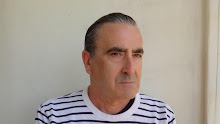"Mad Like Artaud” by Sylvére Lotringer / Translated by Joanna Spinks (univocal)
I read books on Antonin Artaud like a Dodger or Yankees fan eating peanuts in a game. I can’t get enough of Artaud, and almost every book on him, at the very least, is super interesting. “Mad Like Artaud” by Sylvére Lotringer, is the best. So good in fact, that at times have a hard time believing that Lotringer actually interviewed these key people who were Artaud’s doctors as well as the woman who ran his literary estate. By hook or crook.
In French literary circles the issue of Artaud and his madness and therefore his stay in a mental hospital during the occupation is quite controversial. The Letterists had a campaign to annoy the doctor who helped (or destroy) Artaud in the mental hospital - and here we get fascinating long interviews with two of Artaud’s doctors: Jacques Latrémolière and Gaston Ferdière. Lotringer is very aggressive in his questioning for both doctors, but more so for Latrémolière, who clearly didn’t care for Artaud’s work. In fact, he finds it hard to believe that he has any importance whatsoever. On the other hand, Ferdière has a great appreciation for Artaud and his work - and, weirdly enough, has the hatred from the Letterist. What is interesting, as we get an inside view of Artaud’s craziness as well as his life in the hospital. At the start, he almost starved to death, but due to his friend, the poet Robert Desnos, he was spared the misery. So now we have the push and pull of people around Artaud, and in a way it is sort of madness in itself. The most saddest to me is Paule Thèvenin, who is a controversial figure in the Artaud world. She was the head of his literary estate, with some unhappiness on the part of his family. Still, the bitterness comes through after many years.
There is some fiction in the book, where Lotringer meets Artaud as an dying old man - which makes the whole book kind of hmmm. Nevertheless, a fascinating book, and truly a superbly written one as well. For sure a classic Artaud study, but also a fascinating look into the world of a French mental hospital in the post-war years as well as during the occupation. A must for the Artaud lunatic, but also anyone who is interested in 20th century French literature.
 |
| ISBN: 9781937561413 Univocal |
- Tosh Berman





























.jpg)





